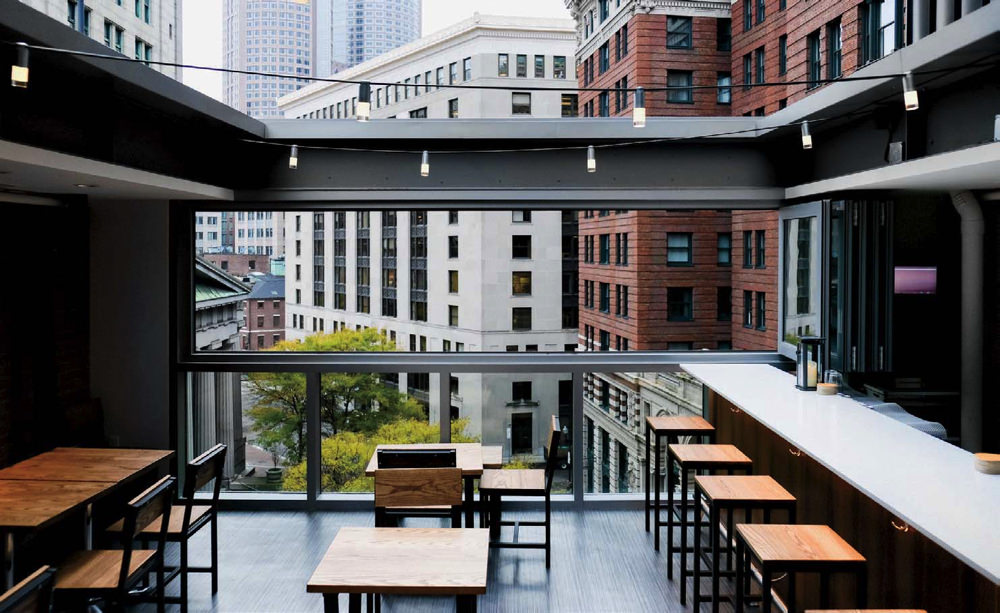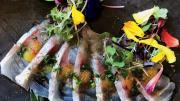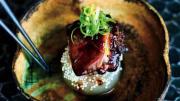Two short blocks from the touristy bustle of Faneuil Hall Marketplace is the cool, tranquil domain of Kamakura.
Named for the hometown of owner and executive chef Youji Iwakura, this refined Japanese restaurant takes up three minimally decorated spaces in a narrow building. On the ground floor, diners at the “chef-tasting” counter and tables are treated to a modern version of kaiseki cuisine (intricate, small-plate dishes) through a $156 10-course tasting menu. The sashimi carpaccio (above), reflecting the entire meal’s beautiful presentation, comes arrayed across the plate like a delicate flowered fan.
Upstairs, an eight-course kaisecki tasting menu ($122), offered in the more traditional style of a tea ceremony, is available, along with à la carte dishes. The rectangular space has large street-side windows, white-leather upholstered chairs, wood tables, and a tidy bar with glass shelving and subtle under-counter lighting.
But if it’s open, head straight to the seventh-floor lounge with retractable roof. Sit at the open windows with views of the historic Boston Custom House and tower. Breathe in the salty ocean scent wafting from the wharves by the New England Aquarium.

The Kumo Skybar and Lounge
Photographs courtesy of Kamakur
This is a prime spot to meet up after a long hot day exploring the city—or for a late-night rendezvous over sake. Or try the Japanese beers and wine, and the ingenious “shoyu what i got” cocktail ($14), with mezcal, sea fennel, orange bitters, and a hint of aged Japanese-style soy sauce.
Any drink goes well with the mushroom medley ($17), a mound of fungi in a brown dashi sauce, with threads of chili pepper and sautéed yu choy (a cross between broccolini and bok choy). The kenchin shojin soup ($8) is named for the Buddhist temple in Kamakura. The clear vegan broth holds an aptly wholesome mix of barely cooked baby Brussels sprouts, carrots, and mushrooms and a fried tofu-skin pocket of puréed vegetables and seaweed. Beef and duck are on the menu, but summertime feels like fish season. Chunks of grilled cod marinated in soy sauce, sake, and mirin ($18) came in a yellow miso glaze and had a faintly lemony flavor—that was likely the irresistible yuzu kosho, a condiment made from chiles that are fermented in salt and the yuzu citrus fruit.
Delivered last to the table was the ikura onigiri ($15): a molded mound of fried rice topped with salmon caviar and strands of nori. The waitress poured on the wasabi dashi broth, softening the grains, creating a dish that merged crispy and tender rice and faintly sour broth, with salty globules of roe.
Savoring each spoonful, we didn’t want to rush the meal—or to end the breezy evening. Down on the street, the crowds had dispersed, heading for homes and hotels. The mood had quieted. As we left Kamakura, the sunlight still had that fading golden glow. But the observation deck atop the Custom House had already closed for the day.











